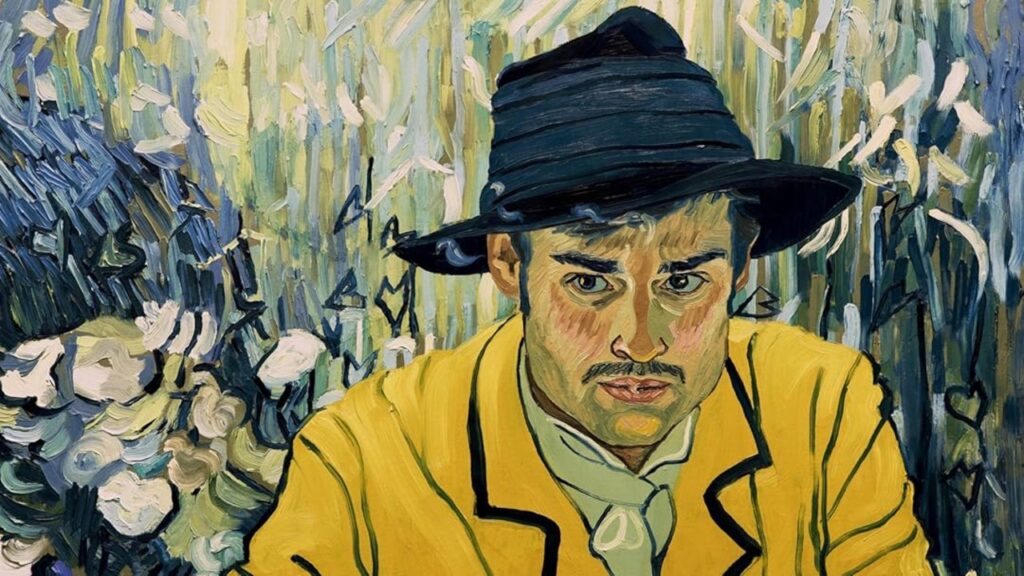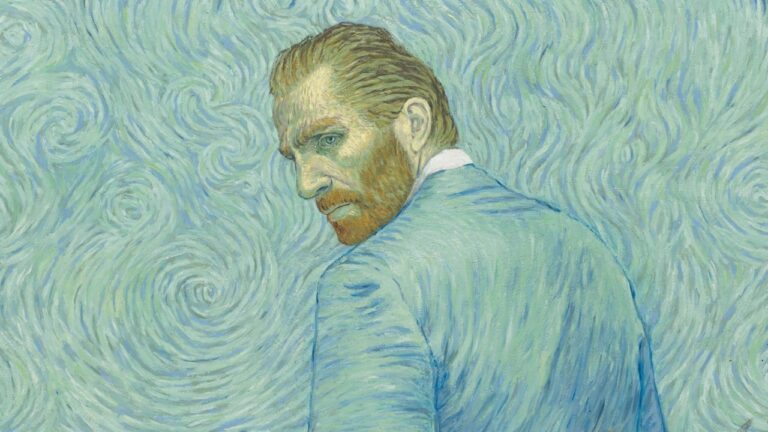‘Loving Vincent‘ is not just another film about Vincent van Gogh, as Willem Dafoe portrayed in At Eternity’s Gate. Created by Dorota Kobiela and Hugh Welchman, the film allows us to step into Van Gogh’s world and experience it through the colors and textures he created. Every frame, more than 65,000 in total, was meticulously hand-painted in oils by a team of over one hundred artists, each closely following Van Gogh’s distinctive style.
This means that every brushstroke, every shade, and every movement in the film reflects the way Van Gogh saw the world. It is an experience that lets us feel the life of his paintings in motion, which makes it unlike anything we have seen before.
Van Gogh’s Life Through Multiple Perspectives and Living Art

The story follows Armand Roulin, a young man who is asked to deliver a letter from Van Gogh to his brother Theo. As he goes from place to place, we hear from people who knew Van Gogh. Each person tells their version of events and memories of him, which gives us different angles on his life and how he died.
Most accounts suggest he took his own life, but the film also hints that things may not have been so simple. Some moments suggest that local teenagers could have been involved in the shooting, which leaves the question of his death open. This choice gives us a lot to discuss and think about, after all, because it challenges the usual story we hear about Van Gogh.
The film shows Van Gogh not just as a troubled artist but as a real human being with emotions, struggles, and relationships. We see a man who cared deeply about his work and about others, even when life around him was difficult. The different stories we hear about him show his complexity, which helps us understand him better than the usual “tortured genius” image. This way, the film makes us think about the pressures and misunderstandings that surrounded him and the way people remember him after his death.
Visually, the film uses the paintings of Van Gogh to show us his world. The landscapes, interiors, and people all look as if they are part of his paintings, which gives us a sense of what it might have been like to live in that world. The camera moves slowly, and the colors and textures convey the feelings of the scenes. This approach makes us notice details and emotions that words alone might not convey. It shows us Van Gogh’s life in a way that is close and personal, and it connects the story with the art itself, which makes the film very special.
Questions, Memories, and the Lasting Mystery of Loving Vincent

Critics and audiences have talked about the movie not just for the painting style but also for how it tells Van Gogh’s story. By leaving the question of his death unclear, the film gives us space to think and talk about him. It makes us reflect on mental health, the myths around artists, and the human experiences behind the paintings. The ambiguity encourages conversation and debate, which keeps Van Gogh’s life and death alive in our minds long after the movie ends.
In the end, Loving Vincent is a film that gives us a way to see Van Gogh through his own eyes and through the eyes of those who knew him. We get to witness his struggles, his brilliance, and the mystery surrounding his death. The movie does not tell us the full truth, but it gives us the pieces to interpret for ourselves. After all, that is part of what makes Van Gogh’s story so powerful. We are left with questions, different possibilities, and a sense that there is always more to understand, just as the paintings themselves continue to speak to us in different ways.




